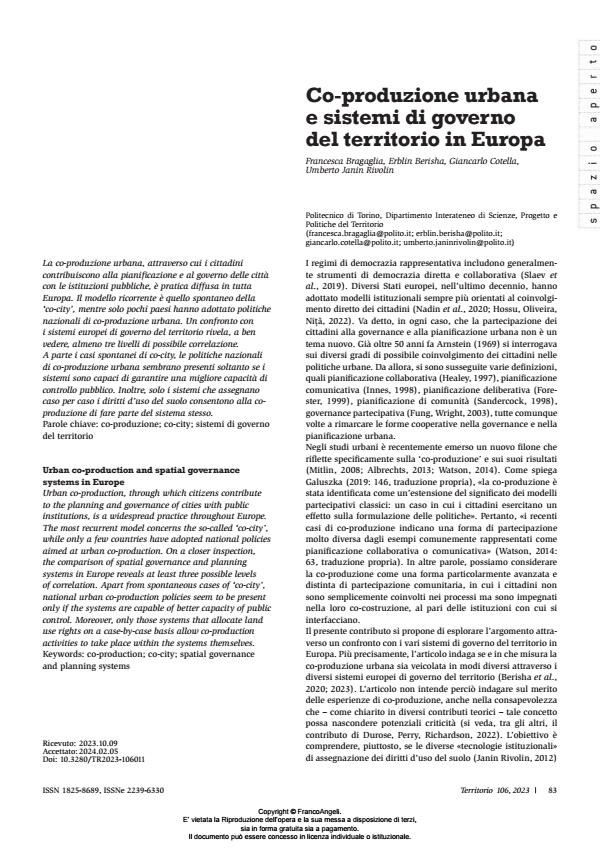Urban co-production and spatial governance systems in Europe
Journal title TERRITORIO
Author/s Francesca Bragaglia , Erblin Berisha, Giancarlo Cotella, Umberto Janin Rivolin
Publishing Year 2024 Issue 2023/106
Language Italian Pages 9 P. 83-91 File size 367 KB
DOI 10.3280/TR2023-106011
DOI is like a bar code for intellectual property: to have more infomation
click here
Below, you can see the article first page
If you want to buy this article in PDF format, you can do it, following the instructions to buy download credits

FrancoAngeli is member of Publishers International Linking Association, Inc (PILA), a not-for-profit association which run the CrossRef service enabling links to and from online scholarly content.
Urban co-production, through which citizens contribute to the planning and governance of cities with public institutions, is a widespread practice throughout Europe. The most recurrent model concerns the so-called ‘co-city’, while only a few countries have adopted national policies aimed at urban co-production. On a closer inspection, the comparison of spatial governance and planning systems in Europe reveals at least three possible levels of correlation. Apart from spontaneous cases of ‘co-city’, national urban co-production policies seem to be present only if the systems are capable of better capacity of public control. Moreover, only those systems that allocate land use rights on a case-by-case basis allow co-production activities to take place within the systems themselves.
Keywords: co-production; co-city; spatial governance and planning systems
- Innovazione sociale: cosa cambia per la governance urbana? Una riflessione a partire dai casi di Inghilterra e Francia1 Francesca Bragaglia, in ARCHIVIO DI STUDI URBANI E REGIONALI 140/2024 pp.102
DOI: 10.3280/ASUR2024-140005
Francesca Bragaglia , Erblin Berisha, Giancarlo Cotella, Umberto Janin Rivolin, Co-produzione urbana e sistemi di governo del territorio in Europa in "TERRITORIO" 106/2023, pp 83-91, DOI: 10.3280/TR2023-106011